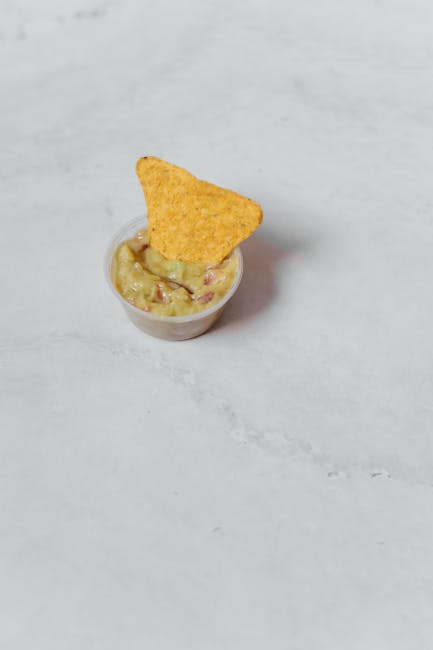Lemon bars, those sunshine-yellow squares of buttery shortbread crust topped with a tangy, intensely lemony custard, are more than just a delicious treat; they’re a testament to the enduring power of simple, yet perfectly balanced flavors. While pinpointing their exact origin is difficult, the consensus points to a likely evolution from earlier lemon desserts prevalent in European cuisine during the 19th and early 20th centuries. Recipes incorporating lemon curd or similar fillings within pastry bases have existed for generations, with variations appearing in cookbooks and family traditions across different countries. The specific form we recognize today – the distinct shortbread crust and intensely lemony filling – likely solidified its place in the American culinary landscape during the mid-20th century, popularized through cookbooks and community gatherings.
The rise of lemon bars in the United States coincided with the increasing availability of readily accessible ingredients and the growing popularity of desserts that were both elegant and relatively easy to make. Their popularity is undeniable; a quick online search reveals millions of recipes and countless variations, showcasing the adaptable nature of this classic dessert. From the addition of berries to the use of different types of citrus, lemon bars have become a canvas for culinary creativity. This adaptability, combined with their vibrant color and refreshing taste, makes them a staple at bake sales, potlucks, and countless home kitchens across the country. Their appeal transcends age groups and cultural backgrounds, making them a truly universal dessert.
Beyond their widespread popularity, lemon bars hold a certain cultural significance, often associated with springtime and sunshine. Their bright yellow color is visually appealing, evoking feelings of warmth and happiness, making them a perfect dessert for celebrations and gatherings. Moreover, the perfect balance of sweet and tart flavors reflects a broader culinary trend towards sophisticated yet accessible desserts. The simplicity of the ingredients belies the complexity of the flavor profile, appealing to both casual bakers and experienced pastry chefs alike. While precise statistics on annual lemon bar consumption are difficult to obtain, their consistent presence in bakeries, cafes, and home kitchens suggests a significant and enduring place within the global dessert landscape.
This recipe aims to guide you through the process of making the best lemon bars, focusing on achieving that perfect balance of a crisp, buttery crust and a tangy, creamy lemon filling. We’ll explore techniques to ensure your crust is perfectly golden and your filling is both smooth and intensely lemony, resulting in a dessert that is worthy of any occasion. Get ready to experience the magic of homemade lemon bars!
Ingredients and Measurements
Creating the perfect lemon bars hinges on using high-quality ingredients and precise measurements. Don’t be tempted to substitute ingredients without understanding the potential impact on the final texture and flavor. This recipe yields approximately 16 bars.
For the Crust:
We’ll start with the buttery, shortbread crust, the foundation of delicious lemon bars. The key here is using cold butter. Cold butter is crucial for a tender and flaky crust. If your butter is too warm, the crust will be tough. Let’s break down the ingredients:
- 1 ½ cups (190g) all-purpose flour: Use a good quality all-purpose flour. Avoid using cake flour or bread flour as they will alter the texture of the crust. Ensure the flour is properly measured using the spoon-and-level method, not scooping directly from the bag.
- ½ cup (100g) powdered sugar: Powdered sugar provides sweetness and helps create a tender crumb. Sifting the powdered sugar before measuring ensures consistent results and prevents lumps.
- ½ teaspoon salt: Salt enhances the flavors of the other ingredients. Don’t skip this! It’s an essential part of balancing the sweetness and acidity.
- ½ cup (113g) unsalted butter, very cold and cubed: Using unsalted butter allows you to control the salt content of the recipe. Cut the butter into small, evenly sized cubes for even distribution and easier mixing. If your butter is too soft, chill it in the refrigerator for at least 30 minutes before proceeding.
For the Lemon Filling:
The lemon filling is where the magic happens! This recipe emphasizes a bright, tangy lemon flavor without being overly sweet. The quality of your lemons will directly impact the flavor of your bars. Choose lemons that are fragrant and juicy.
- 1 ½ cups (300g) granulated sugar: Granulated sugar provides sweetness and helps create the characteristic glossy texture of the lemon filling.
- 1/3 cup (60ml) fresh lemon juice: Use freshly squeezed lemon juice for the best flavor. Avoid using bottled lemon juice, as it often contains preservatives that can affect the taste and texture. The amount of lemon juice might need slight adjustment depending on the tartness of your lemons.
- 4 large eggs: Eggs bind the filling and contribute to its richness. Use large eggs at room temperature for optimal emulsification. Room temperature eggs incorporate more easily into the mixture, leading to a smoother filling.
- 2 tablespoons all-purpose flour: This acts as a thickening agent for the lemon curd, preventing it from being too runny.
- 1 tablespoon lemon zest: Freshly zested lemon peel adds a vibrant lemon aroma and flavor. Be careful to only zest the yellow part of the lemon, avoiding the white pith, which can make the filling bitter.
- ¼ teaspoon salt: As with the crust, salt balances the sweetness and enhances the other flavors.
Optional Garnish: Powdered sugar for dusting.
Crust Preparation
The foundation of any exceptional lemon bar lies in its crust. A perfectly balanced crust should be buttery, slightly sweet, and tender enough to crumble easily, yet sturdy enough to hold the vibrant lemon filling. This section details the process of creating such a crust, focusing on achieving the optimal texture and flavor.
We’ll begin with the dry ingredients. In a medium-sized bowl, whisk together 1 ½ cups (190g) of all-purpose flour and ½ cup (100g) of powdered sugar. Ensure the ingredients are well combined to prevent pockets of flour or sugar in the final crust. Powdered sugar, rather than granulated, contributes to a finer, more delicate crumb. Avoid over-mixing at this stage as it can develop the gluten in the flour, leading to a tough crust.
Next, we incorporate the fats. In a separate bowl, combine ½ cup (113g) of unsalted butter, cut into small cubes, and ¼ cup (57g) of shortening, also cut into small cubes. The combination of butter and shortening provides the perfect balance of flavor and flakiness. Butter contributes richness and flavor, while shortening ensures a tender and less greasy crust. Using a pastry blender or your fingertips, cut the butter and shortening into the flour mixture until the mixture resembles coarse crumbs. Work quickly and avoid over-mixing; you want pea-sized pieces of fat remaining. Over-mixing will result in a tough and dense crust.
Now, add the binding agent. Add 1 large egg yolk to the crumb mixture. The yolk adds moisture and richness to the crust, contributing to its tender texture. Using a fork, gently mix until the dough just comes together. Do not overmix; the dough should be slightly crumbly. Overmixing will once again lead to a tough crust. If the dough seems too dry, add a teaspoon of cold water at a time, mixing minimally until just combined.
Once the dough is formed, press it evenly into the bottom of a greased 9×13 inch baking pan. Use the bottom of a measuring cup or your fingers to create an even layer, ensuring it reaches the corners. Press firmly to create a compact base for the lemon filling. Prick the crust all over with a fork to prevent air bubbles from forming and to ensure even baking.
Before baking the crust, you can optionally pre-bake it for a crispier base. Bake the crust in a preheated oven at 350°F (175°C) for 12-15 minutes, or until lightly golden. This step is crucial for preventing a soggy bottom, particularly if you’re using a very juicy lemon filling. Allow the pre-baked crust to cool completely before adding the lemon filling.
With a perfectly prepared crust, you are one step closer to achieving the best lemon bars you’ve ever tasted. Remember the key to success is to work efficiently, avoid overmixing, and pay attention to the texture of the dough throughout the process.
Lemon Filling Preparation
Creating the perfect lemon filling is crucial for achieving truly exceptional lemon bars. This section details the process, emphasizing techniques for a vibrant, tangy, and perfectly balanced filling.
Begin by zesting and juicing four large lemons. Use a microplane or fine grater to zest the lemons, ensuring you only collect the brightly colored outer layer, avoiding the bitter white pith. This will yield approximately 2 tablespoons of lemon zest. Then, carefully juice the lemons, aiming for approximately 1 cup of fresh lemon juice. Adjust the amount of juice depending on the tartness of your lemons; you might need slightly more or less to achieve your desired level of acidity.
In a medium-sized saucepan, whisk together the lemon juice, 1 ½ cups granulated sugar, ¼ cup cornstarch, and a generous pinch of salt. Whisk vigorously until the sugar and cornstarch are fully incorporated and no lumps remain. This step is important to prevent the filling from becoming grainy. Ensure the cornstarch is completely dissolved; this prevents a starchy taste and ensures a smooth, creamy texture.
Place the saucepan over medium heat. Constantly whisk the mixture as it heats, preventing scorching and ensuring even cooking. The mixture will gradually thicken as it heats. Continue whisking continuously; this is vital to prevent lumps and ensures a smooth, glossy filling. As the mixture starts to simmer, the consistency will change dramatically, becoming thicker and more viscous.
Once the filling comes to a gentle simmer and has thickened significantly, it should coat the back of a spoon. This typically takes around 3-5 minutes of constant whisking. Reduce the heat to low and continue to whisk for another minute to ensure it cooks through evenly and reaches the desired consistency. Do not let it boil vigorously, as this can result in a grainy texture.
Remove the saucepan from the heat and stir in the reserved 2 tablespoons of lemon zest. The heat will slightly soften the zest, releasing its oils and enhancing the overall lemon flavor. Immediately whisk in 4 large eggs, one at a time, ensuring each egg is fully incorporated before adding the next. This step should be done quickly to prevent the eggs from scrambling. The addition of eggs enriches the filling, adding a lovely richness and creaminess.
Pour the lemon filling through a fine-mesh sieve into a bowl. This step is optional, but highly recommended. Sieving removes any lumps or bits of zest that might have survived the whisking process, resulting in an exceptionally smooth and elegant lemon filling.
Allow the filling to cool completely before pouring it over the prepared crust. Cooling the filling prevents the crust from becoming soggy. You can speed up the cooling process by placing the bowl in an ice bath.
Professional Tip: For an extra special touch, consider adding a tablespoon of unsalted butter to the lemon filling while it’s still warm. This will add a subtle richness and enhance the overall flavor profile. Remember to whisk it in thoroughly.
Baking Instructions
Preheat your oven to 350°F (175°C). This is crucial for ensuring the crust bakes evenly and the filling sets properly. Using a lower temperature might result in a soggy bottom, while a higher temperature could lead to burning.
Prepare the baking pan: Grease and flour a 9×13 inch baking pan. This prevents sticking and ensures easy removal of the finished lemon bars. Alternatively, you can line the pan with parchment paper, leaving an overhang on the sides to help lift the bars out later. This method is highly recommended for easy cleanup and perfect presentation.
Press the crust: Evenly press the prepared shortbread crust into the bottom of the prepared pan. Use the bottom of a measuring cup or your fingers to create an even layer. Don’t press too hard, as this can make the crust tough. Aim for a consistent thickness of about ⅛ inch. Bake the crust for 12-15 minutes, or until lightly golden. Keep a close eye on it – ovens vary, and over-baking the crust can lead to a dry, crumbly bottom.
Prepare the lemon filling: While the crust is baking, whisk together the lemon curd ingredients: 1 ½ cups granulated sugar, ¼ cup cornstarch, ½ teaspoon salt, 1 ½ cups fresh lemon juice (about 6-8 lemons), and 4 large eggs. Ensure the eggs are at room temperature for a smoother batter and better incorporation. Whisk until the sugar is dissolved and the mixture is completely smooth. No lumps should remain.
Pour and bake the filling: Carefully pour the lemon filling over the pre-baked crust. Avoid getting any filling on the sides of the pan to prevent burning. Bake for 20-25 minutes, or until the filling is set and no longer jiggles in the center. The edges will be lightly browned, and the center will appear just slightly firm to the touch.
Cool completely: Remove the pan from the oven and let the lemon bars cool completely on a wire rack. This cooling process is essential. Rushing this step will result in a wobbly, messy filling. Allow at least 2 hours, or preferably longer, for the bars to cool and set completely. The longer they cool, the easier they will be to cut and serve.
Dust and Cut: Once completely cool, dust generously with powdered sugar. This adds a touch of sweetness and elegance. Use a sharp knife to cut the bars into squares. Wipe the knife clean between cuts to ensure neat, clean edges. Store in an airtight container at room temperature for up to 3 days, or in the refrigerator for up to a week.
Professional Tip: For an extra lemony flavor, add the zest of 2 lemons to the filling along with the juice. Also, consider using high-quality lemons for the best flavor and aroma. The difference is noticeable!
Cooling and Setting
The cooling and setting process is crucial for achieving perfectly textured lemon bars. Rushing this step will result in crumbly bars that are difficult to cut and serve. Patience is key to achieving that signature delicate crust and creamy, tangy lemon filling.
Once your lemon bars are removed from the oven, the baking sheet will be incredibly hot. Allow the pan to cool completely on a wire rack for at least 30 minutes. This prevents the bottom crust from becoming soggy from trapped steam. A wire rack allows for air circulation underneath the pan, facilitating even cooling.
After the initial 30-minute cooling period, the lemon bars will still be warm to the touch. Resist the urge to cut them at this stage. The filling will be soft and prone to crumbling. The bars need to cool completely to set properly. This usually takes another 1-2 hours at room temperature.
To ensure even cooling and prevent cracking, you can loosely cover the baking sheet with aluminum foil after the initial 30 minutes. This helps retain some moisture while still allowing for air circulation. Avoid using plastic wrap at this stage as condensation can form and make the top of the bars soggy.
Once the lemon bars have cooled completely to room temperature (approximately 2-3 hours total), transfer the entire pan to the refrigerator for at least 2 hours, preferably overnight. This chilling period is essential for firming up the filling and making the bars easier to cut and handle. The longer they chill, the better they will hold their shape.
Refrigerating the lemon bars also enhances their flavor. The chilling process allows the flavors to meld and deepen, resulting in a more complex and enjoyable taste experience. Over-chilling is not harmful; it simply makes them even firmer and easier to cut.
Before cutting, run a thin, sharp knife under hot water and wipe it dry before each cut. This prevents the bars from sticking to the knife and ensures clean, even slices. If you find the bars are sticking, you can run the knife under hot water again between cuts. Using a serrated knife can also be helpful for clean cuts through the slightly dense filling.
Proper cooling and setting are paramount for achieving the perfect texture and flavor in your lemon bars. By following these steps carefully, you’ll be rewarded with elegant, delicious treats that are sure to impress your friends and family.
Cutting and Serving
Cutting lemon bars perfectly is crucial for both aesthetics and portion control. A haphazard cut can lead to uneven pieces and an unprofessional presentation. Use a sharp, thin-bladed knife for the cleanest cuts. A serrated knife works well too, but ensure it’s clean and sharp. A dull knife will crush the delicate crust and make it difficult to get clean slices.
Before you begin cutting, allow the lemon bars to cool completely. This is absolutely essential. Cutting warm lemon bars will result in crumbling and messy pieces. Completely cooled bars will hold their shape much better and be easier to serve. Ideally, let them cool completely at room temperature for at least 2 hours, or even better, overnight in the refrigerator. This allows the bars to fully set and prevents them from falling apart.
Once cooled, use a ruler and a sharp knife to measure and mark the baking pan. For standard 9×13 inch pan, aim for 12 bars. This will give you approximately 1.5 x 2.25 bars. You can adjust the number of bars based on your desired size. If you prefer smaller bars, simply increase the number of cuts. For a more precise cut, lightly score the top of the lemon bars with the knife before making the final cuts. This scoring helps you to guide the knife along straight lines.
When cutting, work slowly and deliberately. Apply gentle pressure and use a sawing motion rather than a forceful push. Wipe the blade clean after each cut to prevent the lemon curd from sticking to the knife and smearing. A clean knife will ensure sharp, clean cuts every time. If the lemon bars are sticking slightly to the pan, you can run a thin, flexible spatula under the edges to loosen them before cutting.
For presentation, consider using a pastry cutter or pizza cutter for even, straight cuts. These tools provide consistent sizing and minimize the risk of uneven pieces. However, a sharp chef’s knife is perfectly adequate if used with care and precision. After cutting, carefully lift each bar with a spatula and transfer it to a serving plate.
Serving suggestions: Lemon bars are best served at room temperature, allowing the flavors to fully develop. Dusting them with powdered sugar just before serving adds a touch of elegance and enhances the visual appeal. You can also garnish with fresh lemon zest or a sprig of mint for an extra flourish. Serve them with a dollop of whipped cream or a scoop of vanilla ice cream for a decadent treat. Store leftover lemon bars in an airtight container in the refrigerator for up to 3-4 days. They will keep their texture and flavor best when refrigerated.
Remember, the key to perfectly cut and beautifully presented lemon bars is patience and precision. Taking your time and using the right tools will make all the difference in the final outcome, ensuring that your lemon bars look as delicious as they taste.
Recommendations for the Best Lemon Bars
For achieving truly exceptional lemon bars, several key recommendations should be followed. First, ensure your ingredients are top-notch. Use fresh, high-quality lemons for the brightest, most vibrant flavor. The zest adds significant aromatic complexity, so don’t skimp on it! Using good quality butter will also contribute to a richer, more flavorful crust. Finally, don’t overbake the bars; slightly underbaked bars are more tender and less dry.
Regarding the crust: Blind baking the crust is crucial for preventing a soggy bottom. Ensure the crust is fully baked before adding the lemon filling. Pressing the crust firmly into the pan is also important for a consistent texture. Consider using a food processor for easier and more even crust preparation. For a more elegant touch, you can use a decorative cookie cutter to shape the crust before baking.
For the lemon filling: Whisk the eggs and sugar thoroughly to ensure a smooth, creamy texture. Be careful not to over-mix the batter as this can lead to tough bars. Adding a pinch of salt enhances the lemon flavor. If you prefer a tangier lemon bar, you can increase the amount of lemon juice. Conversely, for a less tart bar, reduce the lemon juice slightly and increase the sugar. Using fresh lemon juice imparts a superior taste compared to bottled juice.
Serving Suggestions: Lemon bars are delightful served at room temperature or slightly chilled. They are perfect for afternoon tea, dessert after a light meal, or a refreshing treat on a warm day. Garnish with a dusting of powdered sugar, fresh lemon zest, or a sprig of mint for an elegant presentation. Individual squares are easy to serve and portion.
Storage: Store leftover lemon bars in an airtight container in the refrigerator for up to 3-4 days. They will keep their texture and flavor best when refrigerated. To prevent them from drying out, you can cover the container with plastic wrap before placing the lid on. Avoid freezing lemon bars as this can affect the texture of both the crust and the filling.
Complementary Dishes: Lemon bars pair beautifully with a scoop of vanilla ice cream or whipped cream, complementing the tartness of the lemons with a touch of sweetness and creaminess. They also work well alongside a cup of strong black coffee or a light, refreshing tea. For a more substantial pairing, consider serving them with a light fruit salad or a berry compote.
Nutritional Information (per serving, approximate): The nutritional content will vary depending on the specific recipe and ingredients used. However, a typical lemon bar serving (approximately 2 x 2 inches) might contain around 250-300 calories, 15-20g of fat, 30-40g of carbohydrates, and 3-4g of protein. This is an estimate, and precise values should be calculated based on your exact recipe.
Important Note: Always double check your recipe and adjust the ingredients to your preference. Enjoy your delicious homemade lemon bars!





